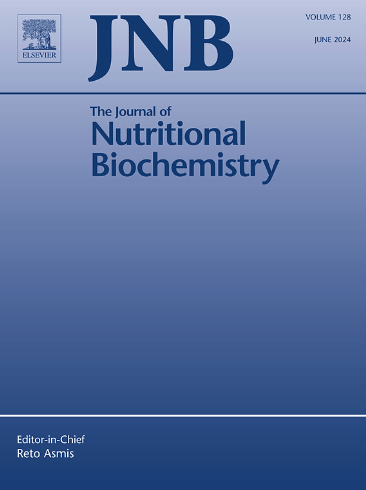肠道微生物群:神经表观基因组的潜在调节剂。
IF 4.8
2区 医学
Q1 BIOCHEMISTRY & MOLECULAR BIOLOGY
引用次数: 0
摘要
肠道微生物组通过“肠脑轴”对中枢神经系统有相当大的影响。神经表观基因组作为环境和基因之间的接口出现,可能有助于将来自微生物组的信号传递到脑组织。虽然只有有限数量的研究涉及肠-脑轴的表观遗传作用,但本综述探讨了肠道微生物组如何影响各种基于大脑的表观遗传机制,包括DNA甲基化,组蛋白修饰,ncRNA和RNA甲基化,特别是在特定神经并发症的背景下。在表观遗传机制中,组蛋白乙酰化与肠道微生物组的关系被研究得最多,对大脑中的基因表达产生动态影响。此外,总结了肠道细菌与神经表观基因组的联系途径,强调了代谢物如丁酸盐、丙酸盐、醋酸盐、乳酸盐和叶酸的作用。特别有趣的是,丁酸盐的作用被强调了,因为它们对组蛋白去乙酰化酶(hdac)具有突出的抑制活性,以及其他机制。值得注意的是,一些间接的肠-脑通路也可能与微生物组和神经表观基因组之间的相互作用有关,而IL-6已被发现有效地将微生物来源的信号传递给大脑中的组蛋白甲基化。最后,我们总结了对理解这种肠-脑串音至关重要的未来观点,如澄清因果关系,肠道内细菌交叉喂养,以及大脑中特定位点组蛋白修饰的机制。总之,这篇综述试图巩固我们目前关于“微生物组-神经表观基因组相互作用”的知识,并提出一个概念性的途径来破译各种神经系统疾病中的肠-脑轴。本文章由计算机程序翻译,如有差异,请以英文原文为准。

Gut microbiome, a potential modulator of neuroepigenome
Gut microbiome has a considerable impact on the central nervous system via the “gut-brain axis.” Neuroepigenome emerges as the interface between environment and genes, potentially help conveying the signals derived from the microbiome to the brain tissue. While only a limited number of studies have implicated epigenetic roles in the gut-brain axis, this review explores how gut microbiome might impact various brain-based epigenetic mechanisms, including DNA methylation, histone modification, ncRNA and RNA methylation, notably in the context of the specific neural complications. Among the epigenetic mechanisms, histone acetylation was most well-studied with respect to its relationships with gut microbiome, exerting a dynamic influence on gene expression in the brain. Furthermore, the pathways connecting gut bacteria to neuroepigenome were summarized, highlighting the roles of metabolites such as butyrate, propionate, acetate, lactate, and folate. Of particular interest, the roles of butyrate are emphasized due to their outstanding inhibitory activity towards histone deacetylases (HDACs), among other mechanisms. It is worth noting that some indirect gut-brain pathways may also be associated with the interplay between microbiome and neuroepigenome, while IL-6 has been found to effectively transmit microbe-derived signals to histone methylation in brains. Finally, we recapitulate the future perspectives critical to understanding this gut-brain crosstalk, such as clarifying the cause-and-effect relationship, bacterial cross-feeding within the gut, and the mechanisms underlying the site-specific histone modification in the brain. Together, this review attempts to consolidate our current knowledge about the “microbiome-neuroepigenome interplay” and propose a conceptual pathway to decipher the gut-brain axis in various neurological conditions.
求助全文
通过发布文献求助,成功后即可免费获取论文全文。
去求助
来源期刊

Journal of Nutritional Biochemistry
医学-生化与分子生物学
CiteScore
9.50
自引率
3.60%
发文量
237
审稿时长
68 days
期刊介绍:
Devoted to advancements in nutritional sciences, The Journal of Nutritional Biochemistry presents experimental nutrition research as it relates to: biochemistry, molecular biology, toxicology, or physiology.
Rigorous reviews by an international editorial board of distinguished scientists ensure publication of the most current and key research being conducted in nutrition at the cellular, animal and human level. In addition to its monthly features of critical reviews and research articles, The Journal of Nutritional Biochemistry also periodically publishes emerging issues, experimental methods, and other types of articles.
 求助内容:
求助内容: 应助结果提醒方式:
应助结果提醒方式:


